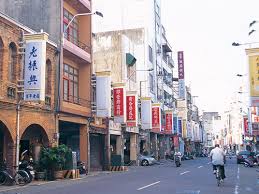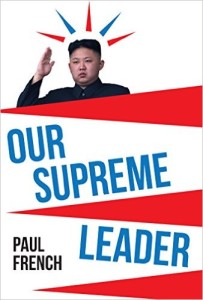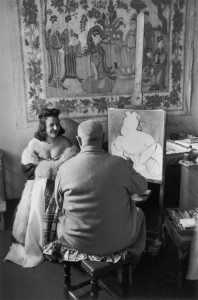Posted: August 3rd, 2016 | No Comments »
An interesting exhibition by photographer Michael Geier focussing on Hsinchu’s Beimen Street….
Austrian expat photographer Michael Geier has a new solo exhibition opening at Hsinchu’s Jiang Shan Yi Gai cafe on Saturday. Gaze Into the Street (溫柔的å‡è¦–) is a collection of photographs taken by Geier of the historic Beimen Street (北門街) near the City God Temple (城éšå»Ÿ). Some of the street’s architecture has remained unchanged since the late Qing dynasty. Lately, there have been protests against construction on Beimen Street and student-led groups have been promoting its preservation as a heritage site. Geier captures this sentiment — the struggle between preserving tradition and wanting to modernize — in his photography in a way that’s pensive yet evocative.
â– Jiang Shan Yi Gai (江山è—改所), 17-4, Jiangshan St, Hsinchu City (新竹市江山街17-4號), tel: (03) 526-6456. Open Tuesdays to Sundays from 2pm to 11pm

Posted: August 2nd, 2016 | No Comments »
Apologies today for a slight deviation from the normal run of old Shanghai and China posts and, instead, a little obvious self-promotion. My new short e-book Our Supreme Leader: The Making of Kim Jong-un (published by Zed Books) is now available on amazon.co.uk and amazon.com for mere pennies….

Since his accession to power in 2012, Kim Jong-un has come to personify North Korea in the eyes of the outside world. An object of derision as much as fear, he has nevertheless succeeded in strengthening his grip on the country, purging potential rivals and strengthening the personality cult around himself and his predecessors. This process is set to culminate at the Seventh Congress of the Korean Workers’ Party, the first such congress in over thirty-five years, where Kim is widely expected to proclaim the dawn of a new era under his leadership.
In Our Supreme Leader, Paul French explores the ways in which the North Korean regime has evolved under Kim’s direction, with a detailed analysis of the history and development of its infamous cult of The Great Leader. Featuring the first in-depth assessment of the Seventh Congress and its significance within North Korea, French also offers fresh insights into the inner workings of this secretive regime, as well as looking ahead to its likely future direction.
Posted: August 1st, 2016 | 4 Comments »
My apologies for my own subtitle to Beverley Hooper’s entertaining study of foreigners who lived in Mao’s China between 1949 and 1976, but most fell into one (or more) of those categories – useful idiots, true believers, diplos & traitors. Nobody much defects to China anymore, their spies are deep undercover, diplos used to be characters but rarely are these days in our more blanded world though of course the useful idiots still abound (see the recent nonsense video from Xinhua with foreigners lining up to support the Communist Party on their belligerent South China Seas stance post the Hague ruling. Then as now it’s a curious phenomenon – idiots, the easily duped, paid, tricked, coerced or just not that bright? Hard to tell). Still, before 1976 was the heyday of the traitors and useful idiots and they’re all here pretty much…

Foreigners under Mao: Western Lives in China, 1949–1976 is a pioneering study of the Western community during the turbulent Mao era. Based largely on personal interviews, memoirs, private letters, and archives, this book ‘gives a voice’ to the Westerners who lived under Mao. It shows that China was not as closed to Western residents as has often been portrayed.
The book examines the lives of six different groups of Westerners: ‘foreign comrades’ who made their home in Mao’s China, twenty-two former Korean War POWs who controversially chose China ahead of repatriation, diplomats of Western countries that recognized the People’s Republic, the few foreign correspondents permitted to work in China, ‘foreign experts’, and language students. Each of these groups led distinct lives under Mao, while sharing the experience of a highly politicized society and of official measures to isolate them from everyday China.
Beverley Hooper is emeritus professor of Chinese studies at the University of Sheffield in the UK. She is the author of Inside Peking: A Personal Report, Youth in China and China Stands Up: Ending the Western Presence 1948–1950.
‘This book is enjoyable and engaging. The author introduces a small but dynamic collection of enthusiastic international participants in post-1949 China showing unquestioned loyalty to Mao’s ideals. Equally intriguing are the alternate stories of diplomats and reporters existing far outside the mainstream of Chinese life and trusted by neither the Chinese nor the international supporters.’
—Edgar A. Porter, Professor Emeritus, Ritsumeikan Asia Pacific University; author of The People’s Doctor: George Hatem and China’s Revolution
‘A well-written survey about the variety of Westerners who lived and worked in the People’s Republic of China between 1949 and 1976. This is a welcome addition to the “sojourner†literature about foreigners who lived in twentieth-century socialist countries. The scholarship, which includes the review of memoirs, archival materials, and secondary works, is impressive and comprehensive.’
—Stephen R. MacKinnon, Arizona State University; co-author of China Reporting: An Oral History of American Journalism in the 1930s and 1940s
Posted: July 30th, 2016 | No Comments »
The Sassoon family of course continues to attract interest and biographers – from Baghdad to Bombay, Shanghai to Trent Park. The centenary of World War One has seen reprints of Siegfried’s work while Taras Grescoe’s Shanghai Grand features Sir Victor as a major character. Interestingly too Damian Collins’s new biography of Philip Sassoon, a rather forgotten member of the family (partly I believe because he died young at 50, just before World War Two) but once a highly influential figure. Charmed Life: The Phenomenal World of Philip Sassoon is, I think, a very good addition to the Sassoon shelf and rounds out the family’s interests and influences….

The story of a fascinating man who connected the great politicians, artists and thinkers at the height of British global power and influence.
A famed aesthete and patron, Philip Sassoon’s world was one of luxury and classic English elegance with oriental flair. He gathered a social set that would provide inspiration for Brideshead Revisited. At his famous parties you might find Winston Churchill arguing over the tea cups with George Bernard Shaw, the Prince of Wales playing tennis with Charlie Chaplin, Noël Coward mingling with flamingos and Lawrence of Arabia and Rex Whistler painting murals as the party carried on around him.
But Philip Sassoon was not just a wealthy aesthete. He worked at the right hand of Douglas Haig during the First World War and then for Prime Minister Lloyd George for the settlement of the peace. He was close to King Edward VIII during the abdication crisis, and Minister for the Air Force in the 1930s. And neither was he wholly ‘English’. The heir of a family of wealthy Jewish traders from the souks of Baghdad, Philip craved acceptance from the English establishment, many of whom thought him both foreign and too exotic. He opened his house to his friends but rarely his heart, and as he was almost certainly homosexual.
In ‘Charmed Life’, Damian Collins explores an extraordinary product of an age; a man who, before dying prematurely aged only 50, in June 1939, Noël Coward called a ‘phenomenon that would never recur’.
Posted: July 29th, 2016 | No Comments »
Talking of Chinoiserie themed French hotels yesterday I’ll offer up this picture, by Henri Cartier-Bresson, of Henri Matisse at his studio in the hilltop town of Vence, in the Alpes Maritimes of south western France, with a Chinoiserie backdrop…..

Posted: July 28th, 2016 | No Comments »
It’s been a while since I stayed in a Chinoiserie themed room. Previous experiences of being offered Chinoiserie themed rooms have not always gone well (to see just how badly it can go see this post from 2009 on staying in the “Oriental Room” at the Radisson Blu in Brussels – not good!). However, I’m glad to report that Le Verger, a hotel (and nineteenth century manor house) in Chambellay, Maine-et-Loire department in western France is an altogether much better place to stay in Chinois splendour. And so here are some pictures of their delightful Chinese room….




Posted: July 27th, 2016 | No Comments »
Quite a lot of Shanghai recently, so a little excursion north to Peking – in 1930. Here an advert for the American Express offices in Peking, which were in the Grand Hotels des Wagon Lits. The Wagon Lits (or, as the US Marines who gathered in the bar looking for women of easy virtue termed it, the Wagon Slits) is long gone sadly. Built in 1905, it was the first major hotel in Peking’s Legation Quarter. Built in Flemish Gothic style (and significantly added to after 1914) it was a natural home for the city’s American Express offices – close to the railway station.




Posted: July 27th, 2016 | No Comments »
I blogged recently about Clarence Doane Hoggard, who came to China in 1919 as an auditor for the international YMCA and stayed. He eventually went into business with W. Warren Sigler (Sigler died some time before the end of WW2)to run Hoggard and Sigler’s, one of Shanghai’s best antiques and curio stores. Their store was located in the Sassoon Arcade, (part of the Cathay Hotel). The shop was partially damaged in August 1937 with the bombing of the Cathay Hotel on Bloody Saturday. Hoggard returned to Shanghai in 1940, salvaged what he could of the stock and left Shanghai once again for America. His ship was near Borneo at the time of Pearl Harbor but eventually made it back to the USA. After the war Hoggard continued to trade Oriental antiques and curios in America – at the time of his arrival back in the USA he mentioned opened stores in both Tuscon, Arizona and St Petersburg, Florida. He did indeed open a new shop at no.9 East Penington Street in Tuscon called “Tjen†(perhaps someone in Tuscon could stroll past and see what’s there now?). Here he seems to have sold the remaining stock of antiques, statuary and curios from his Sassoon Arcade store.
Just to add to that previous post here is an advert for Hoggard-Sigler from around 1930 and a picture of Hoggard published in 1948…
















